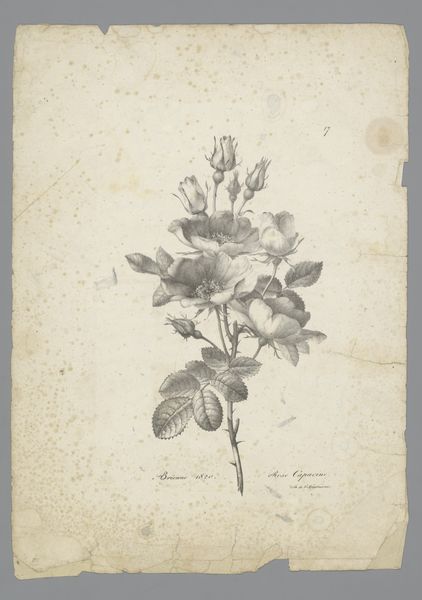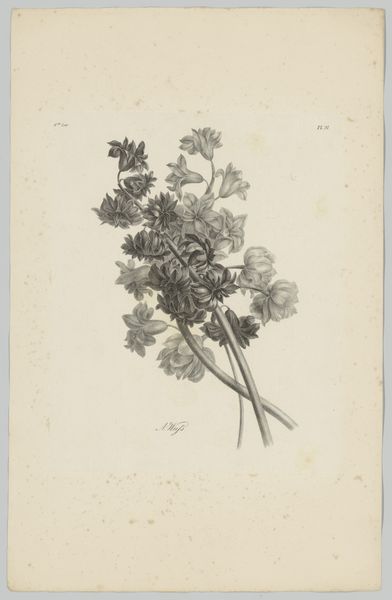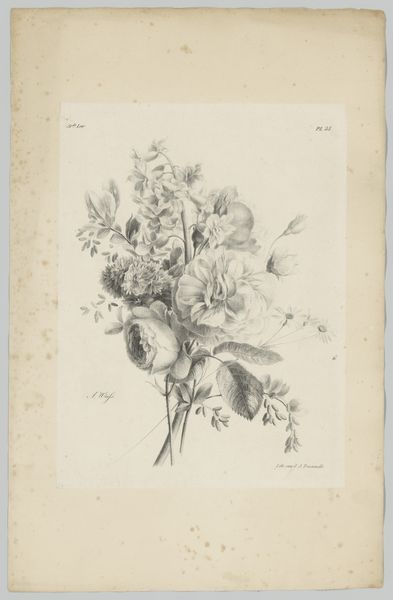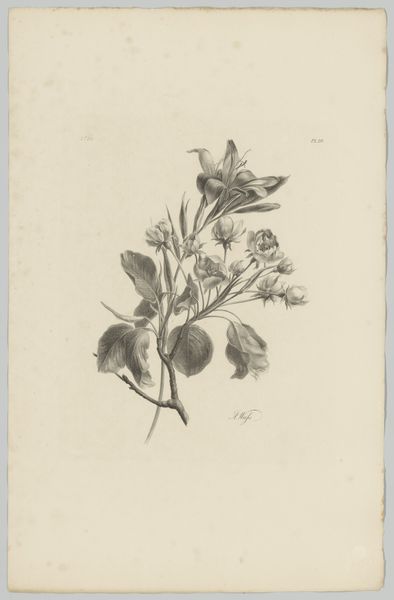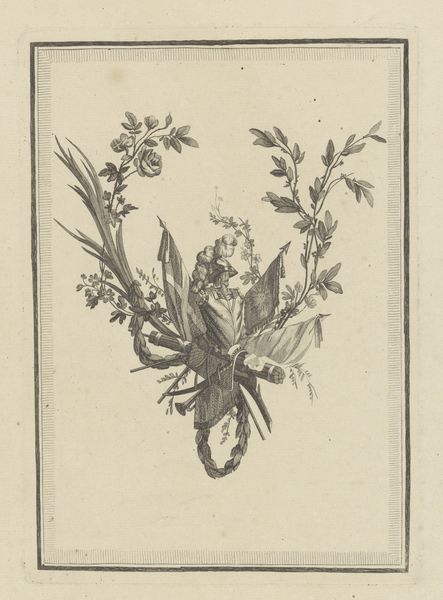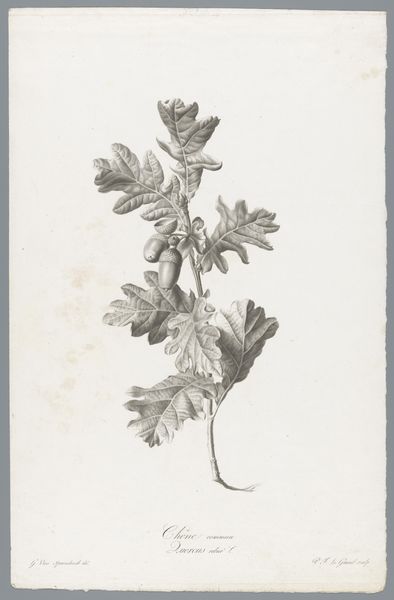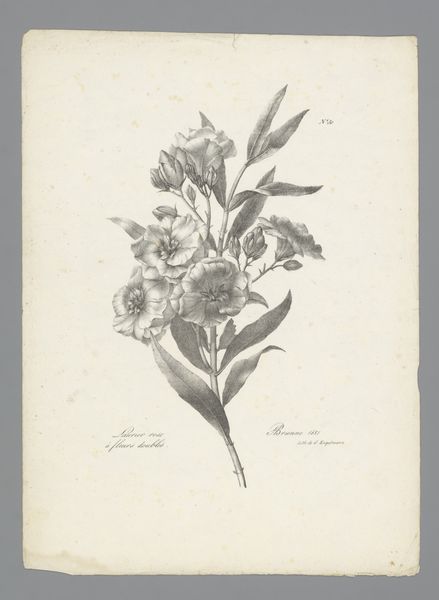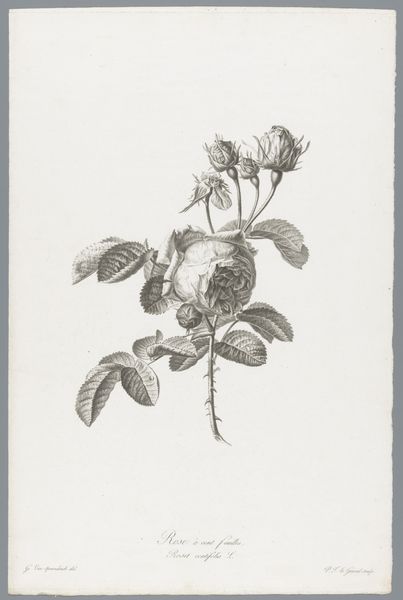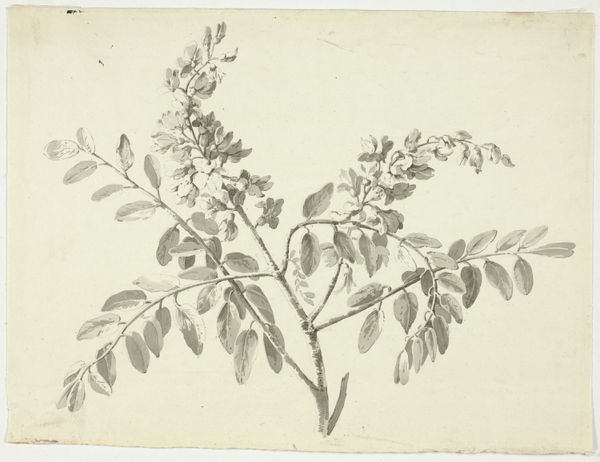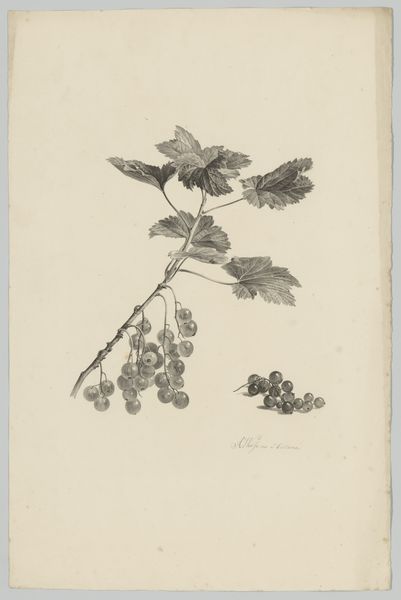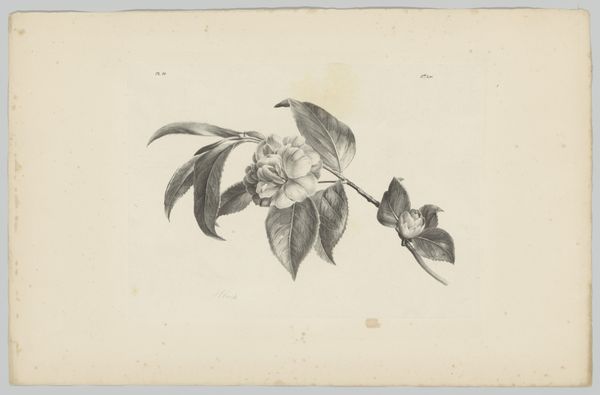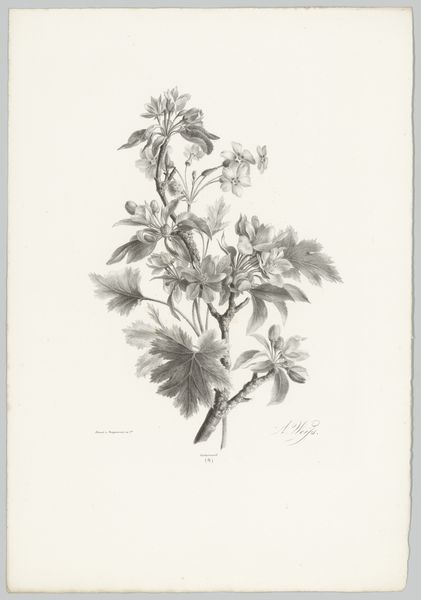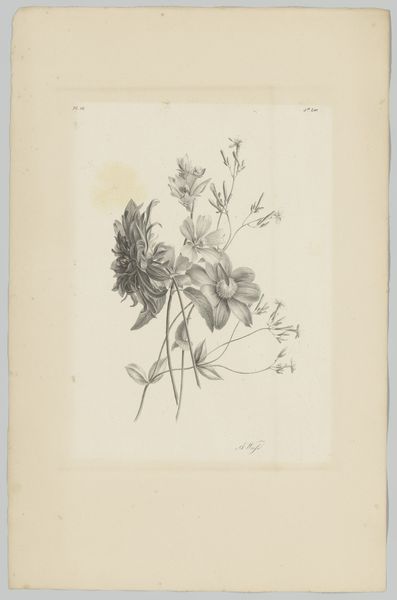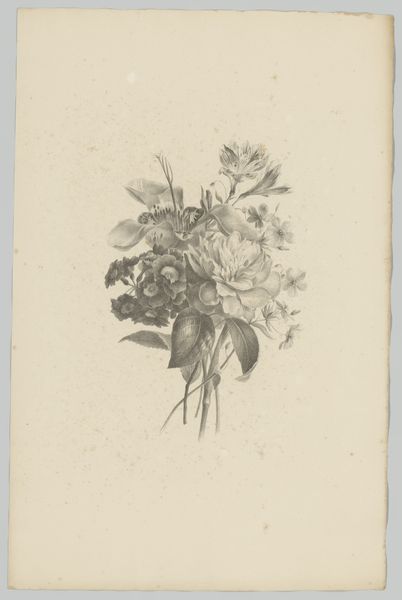
drawing, paper, ink
#
drawing
#
paper
#
ink
#
coloured pencil
#
romanticism
Dimensions: height 480 mm, width 310 mm
Copyright: Rijks Museum: Open Domain
Curator: Let's turn our attention to "Bloesemtak," a drawing housed here at the Rijksmuseum, made sometime between 1820 and 1833. It's rendered in ink on paper. What’s your initial take on it? Editor: My first impression is of delicate strength. There's an inherent tension between the fragility of the blossoms and the hardy branch. You can almost feel the textures in those leaves; it seems so tangible. Curator: It's a beautiful example of Romanticism's interest in the natural world. I find the study compelling, particularly in relation to the history of botanical illustration and how it intertwined with colonialism and scientific exploration. Consider how detailed depictions like these were used to classify and sometimes exploit natural resources. Editor: Exactly! And looking closer, I wonder about the paper itself – what kind was it? How accessible would materials like this paper and the ink have been at the time? What labour went into the crafting of the tools to produce it? Curator: Good questions. Also, think about the artistic labour represented. What societal norms and class dynamics influenced access to art training? The artist's identity undoubtedly impacted their approach. The level of botanical understanding is apparent – were they just an artist, or involved with more scholarly circles, shaping knowledge production of the era? Editor: And even something as simple as the decision to focus on this particular branch – was it a prized cultivar? Was there an active local fruit or flower trade influencing its depiction? Curator: Indeed. The consumption patterns, too. These images often catered to elite audiences, influencing tastes and dictating status symbols. Editor: It brings into focus the entire material network around art creation, rather than just the singular "artistic genius." Looking closely allows a greater understanding of those systems of creation. Curator: Absolutely. I find considering the politics enmeshed with art and science equally important; it shapes how we appreciate its beauty and purpose, challenging this piece's perceived innocence within our social constructs. Editor: Examining the physical elements and their sources is key to unraveling the history intertwined within it, adding layers beyond aesthetics. Curator: Thinking about all the layers we uncovered makes it even richer than that initial impression of simple beauty. Editor: For me, its value now extends beyond a static image.
Comments
No comments
Be the first to comment and join the conversation on the ultimate creative platform.
